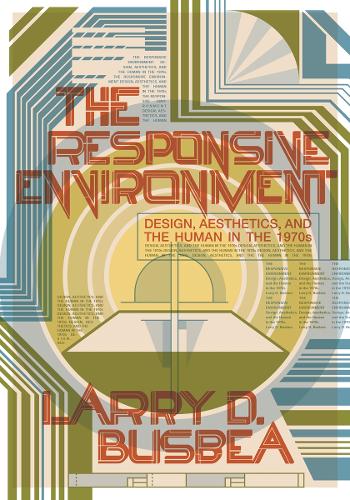
The Responsive Environment: Design, Aesthetics, and the Human in the 1970s
(Paperback, 1)
Available Formats
Publishing Details
The Responsive Environment: Design, Aesthetics, and the Human in the 1970s
By (Author) Larry D. Busbea
University of Minnesota Press
University of Minnesota Press
1st February 2020
1
United States
Classifications
General
Non Fiction
Design, Industrial and commercial arts, illustration
History of architecture
Philosophy: aesthetics
111.85
Physical Properties
Paperback
344
Width 178mm, Height 254mm, Spine 38mm
Description
The history of how new conceptions of human-environment interaction became central to design theories and practices in the 1970s.
At the end of the 1960s, new models of responsiveness between humans and their environments had a profound impact on theories and practices in architecture, design, art, technology, media, and the sciences. The resulting initiatives design philosophies, art installations, architectural projects, exhibitions, publications, and symposia sought to bring together insights from biology, systems theory, psychology, and anthropology with modernist legacies of total design.
In The Responsive Environment, Larry D. Busbea takes up this concept of environment as an object and method of design at the height of its aesthetic, technical, and discursive elaboration. Exploring emerging paradigms of environmental perception, patterning, and control as developed by Gregory Bateson, Edward T. Hall, Wolf Hilbertz, Gyoergy Kepes, Marshall McLuhan, Nicholas Negroponte, Paolo Soleri, and others, he shows how living space itself was reimagined as a domain capable of modification through input from its newly sensitised inhabitants. The Responsive Environment intercuts the development of new ideas about environmental awareness with case studies of specific architecture and design projects for responsive environments. Throughout, Busbea connects these theories and practices to the contemporary obsession with 'smart' things: responsive technologies, intelligent environments, biomimetic materials, and digital atmospherics.
Reviews
"The Responsive Environment contributes vital research on the emergence of responsive environments within design experiments and projects undertaken in the 1970s. Abounding with remarkable archival materials, this detailed study of designers and practices offers a valuable historical account of the rise of the smart surrounds that now characterize contemporary computerized worlds."Jennifer Gabrys, author of Program Earth: Environmental Sensing Technology and the Making of a Computational Planet
"The Responsive Environment is a necessary book, one that helps us understand how concepts of environment, subjectivity, and aesthetics underpin historical and conceptual developments in art and architecture. It is a carefully crafted journey through essential thinkers in this field, and it opens new pathways for exploring how we relate to objects, environments, and ourselves."Daniel A. Barber, author of A House in the Sun: Modern Architecture and Solar Energy in the Cold War
Author Bio
Larry D. Busbea is associate professor of art history at the University of Arizona. He is author of Topologies: The Urban Utopia in France, 19601970.
